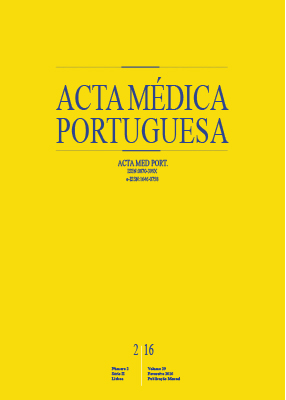Relation between QT Variables and Left Ventricular Geometry in Athletes and Obese Children
DOI:
https://doi.org/10.20344/amp.6538Keywords:
QT dispersion, electrocardiography, cardiovascularAbstract
Introduction: We aimed to evaluate the relation between QT variables and left ventricular geometry in athletes and obese children.
Material and Methods: This study included 209 children and adolescents. Thirty-eight of them were obese, 140 were athletes and 31 were normal weighted. Children with history of functional and structural cardiovascular diseases (acquired and congenital), chronic systemic diseases, hypertension, sleep apnea, endocrinological disorders were excluded. All subjects underwent detailed electrocardiographic and echocardiographic examination.
Results: QT dispersion was significantly higher in obese children, basketball players, football players and swimmers compared to control group (p < 0.05, p < 0.001, < 0.001 and < 0.01 respectively). Basketball players had the highest QT dispersion. Left ventricular endsystolic diameter (mm/m2) was higher in footballers, swimmers, wrestlers and tennis players compared to obese subjects. Interventricular septal thickness at diastole was highest in swimmers compared to control group (p < 0.001) and left ventricular posterior wall thickness was significantly higher in footballers and swimmers compared to healthy subjects (p < 0.01 and p < 0.001 respectively). Left ventricular geometry was normal in 84 patients (47.1%), but 34 patients (19.1%) had concentric remodelling, 20 (22.4%) had concentric hypertrophy and 40 (28.6%) had eccentric hypertrophy. No concentric and eccentric hypertrophy was observed in obese subjects. Left ventricle hypertrophy was prominent in dynamic and combined groups but it was not statistically significant (p = 0.204). QT dispersion was statistically higher in obese, dynamic sports and combined sports compared to control group (p < 0.05, p < 0.001 and p < 0.001 respectively).
Discussion: In this study we determined that QT dispersion is elevated in dynamic and combined sports types and obese children.
Conclusion: QT dispersion is prolonged in obese and athletes who participate dynamic and combined sports.
Downloads
Downloads
Published
How to Cite
Issue
Section
License
All the articles published in the AMP are open access and comply with the requirements of funding agencies or academic institutions. The AMP is governed by the terms of the Creative Commons ‘Attribution – Non-Commercial Use - (CC-BY-NC)’ license, regarding the use by third parties.
It is the author’s responsibility to obtain approval for the reproduction of figures, tables, etc. from other publications.
Upon acceptance of an article for publication, the authors will be asked to complete the ICMJE “Copyright Liability and Copyright Sharing Statement “(http://www.actamedicaportuguesa.com/info/AMP-NormasPublicacao.pdf) and the “Declaration of Potential Conflicts of Interest” (http:// www.icmje.org/conflicts-of-interest). An e-mail will be sent to the corresponding author to acknowledge receipt of the manuscript.
After publication, the authors are authorised to make their articles available in repositories of their institutions of origin, as long as they always mention where they were published and according to the Creative Commons license.









